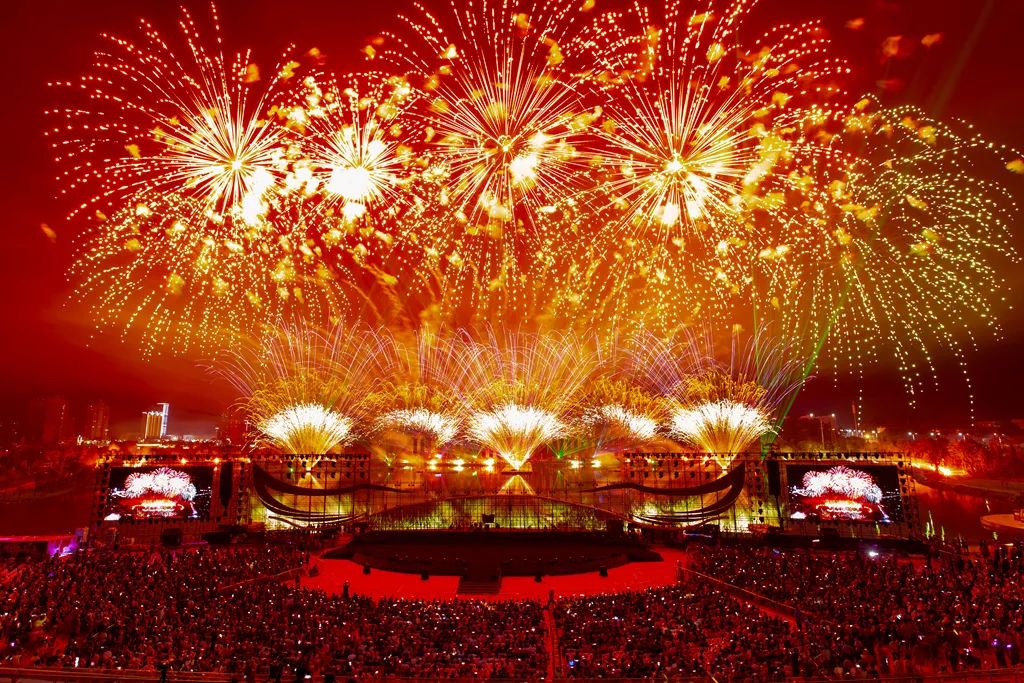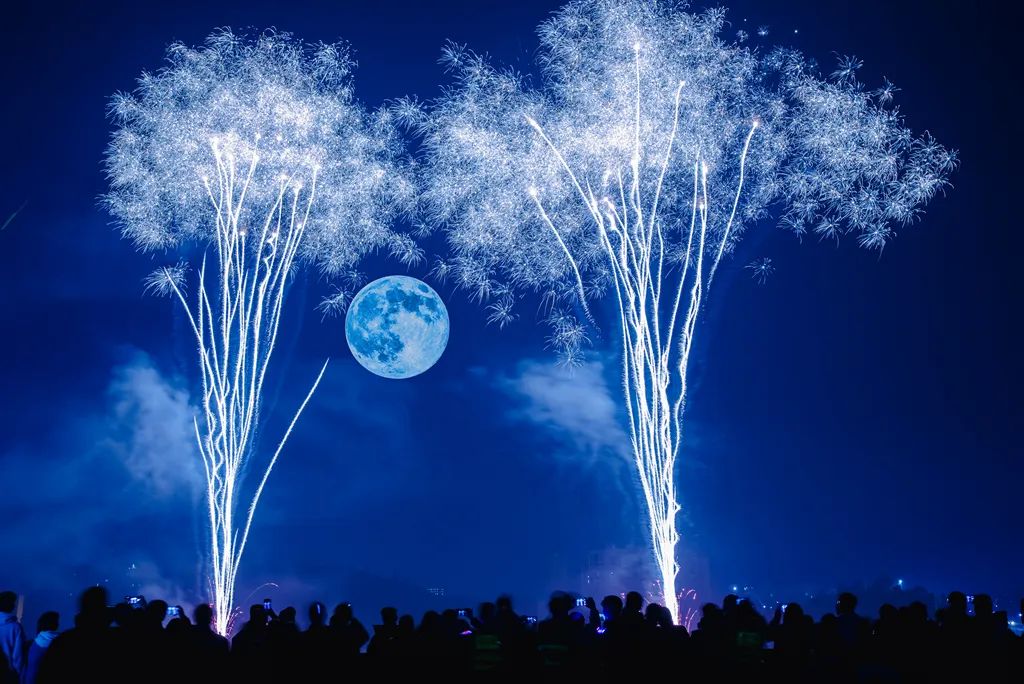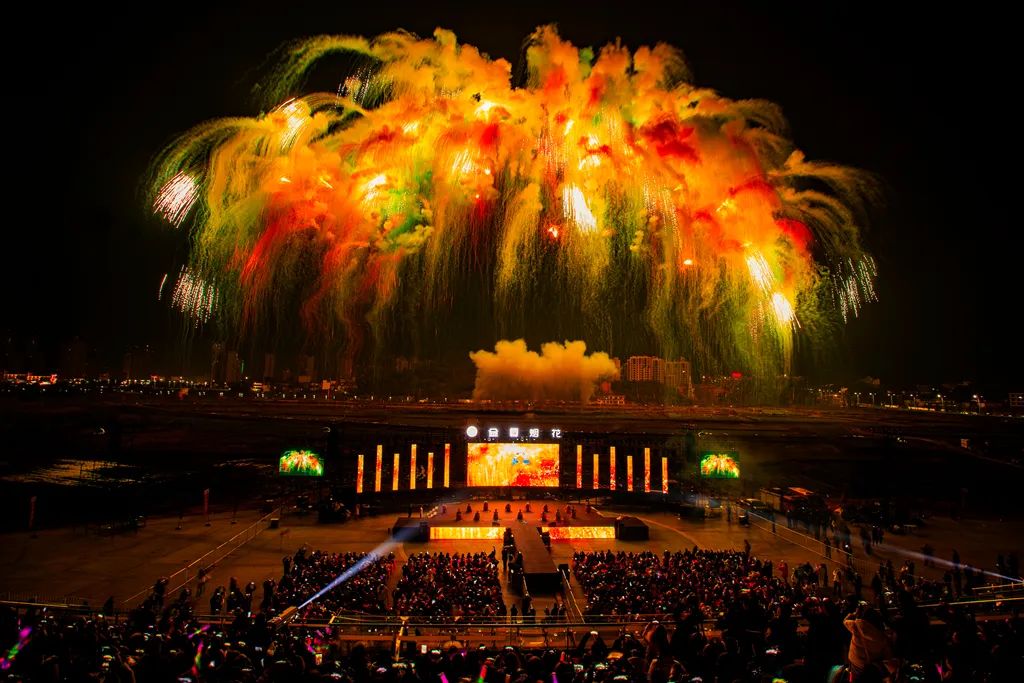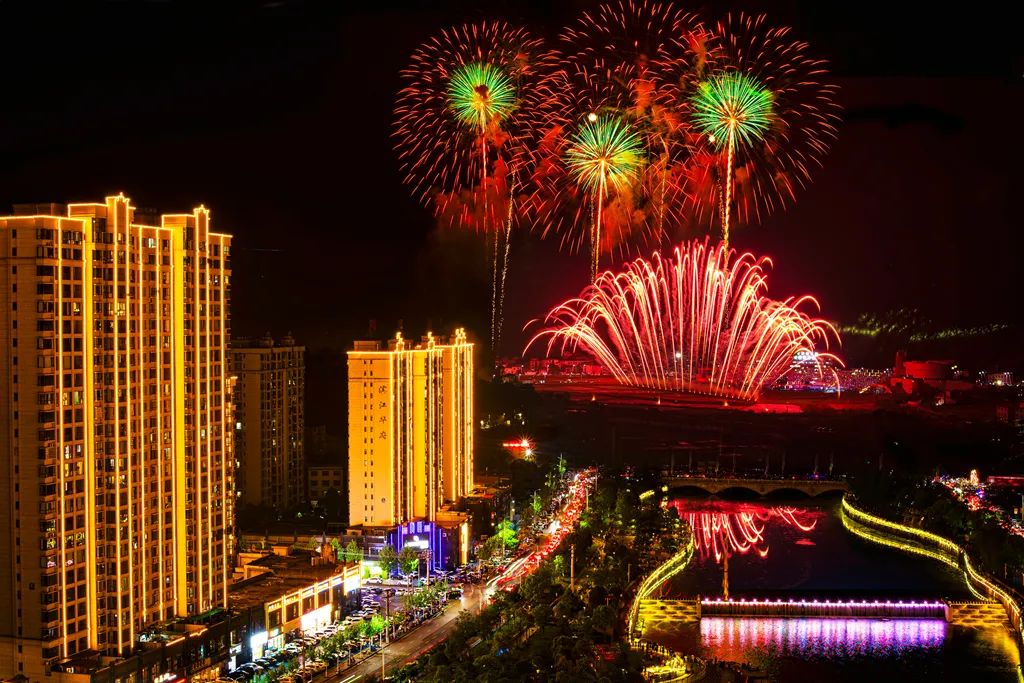Research Progress on Environmentally Friendly Pyrotechnic Compositions in China Fireworks
As environmental awareness continues to grow, the push to make pyrotechnic compositions more eco-friendly has become a necessary trend in the fireworks industry. This paper reviews the latest advancements in sulfur-free pyrotechnics, perchlorate-free formulations, the elimination of heavy metals and organochlorines in pyrotechnic mixtures, and the development of environmentally friendly smoke-producing agents. It also outlines future directions for research in eco-friendly fireworks compositions, aiming to provide technical references for developing new materials and improving existing formulations.

1. Sulfur-Free Pyrotechnics
Traditional pyrotechnics often contain sulfur, which releases toxic gases such as sulfur dioxide and sulfides upon combustion. These pose health risks when inhaled. The large-scale detonation of fireworks can significantly increase atmospheric concentrations of sulfur dioxide, nitrogen oxides, and particulate matter (PM2.5), leading to visible air pollution. As a result, producing low-sulfur or sulfur-free fireworks and firecrackers has become an urgent priority.
1.1 Firecracker Products
Most commercial firecrackers are based on white powder formulas with sulfur contents around 25%. In one study, a sulfur-free firecracker composition was developed using potassium perchlorate as an oxidizer, aluminum powder and sulfur-free additives as fuels. The performance was comparable to conventional firecrackers, though slightly more expensive.
1.2 Firework Shells
Sulfur is mainly present in lift charges, ignition mixtures, and burst charges, while color compositions usually contain less. In recent years, sulfur-free or low-smoke formulations have been successfully developed and applied in some products. Liu Tingliang et al. formulated a sulfur-free bursting charge using potassium perchlorate, potassium hydrogen phthalate (C8H5KO4), and carbon powder. Ouyang Nan et al. developed a sulfur-free lift charge composed mainly of potassium perchlorate and inert carbon.

2. Perchlorate-Free Pyrotechnics
Perchlorates have long been favored as oxidizers due to their low hygroscopicity and strong reactivity. However, excessive intake of perchlorates can inhibit iodine uptake by the thyroid gland, leading to disorders and even birth defects. Environmental authorities have implemented regulations to control perchlorate-containing wastewater from fireworks production. Some local governments have allocated funding to support research into perchlorate degradation. Although progress has been made, high costs and complex maintenance make these solutions difficult for small manufacturers to adopt.
An alternative approach involves replacing perchlorates with periodates. Brusnahan et al. proposed using sodium and potassium periodates (NaIO4 and KIO4) as substitutes for potassium perchlorate. Periodates exhibit better thermal stability, lower solubility, and reduced competition with iodine uptake by the thyroid. Although the new formulations showed minor energy losses, the functional performance remained satisfactory.

3. Removal of Heavy Metals from Pyrotechnics
According to Safety and Quality Standards for Fireworks and Firecrackers (GB10631—2013), compounds of lead, arsenic, and mercury are either banned or restricted. Currently, barium is the most commonly used heavy metal in pyrotechnics, especially for producing green color effects. Traditional green formulations often use barium nitrate in combination with organochlorines to produce metastable BaCl emissions. However, the toxicity of barium and the harmful byproducts of organochlorines make these mixtures unsuitable for eco-friendly fireworks.
CuOH (copper hydroxide) was among the earliest alternatives for green flames. Tang Guilin et al. used copper oxide as both oxidizer and colorant with organic fuels, achieving a color purity of 82% and significantly reduced smoke and toxic emissions. Boron compounds, such as boron carbide (BC4), also emit green light and are less toxic. Sabatini’s research showed BC4 could produce high-quality green light when burned with potassium nitrate, with minimal toxic byproducts and low production costs. Another alternative involved using magnesium diboride (MgB2) as a fuel, potassium nitrate as oxidizer, and PTFE as binder. Li Xuejun et al. developed rare-earth-based formulations (Ce, Pr, Sm, Eu, Tb, Dy, Yb) using rare-earth nitrates, magnesium, and starch, achieving green flame effects in most cases, with Eu producing red.

4. Elimination of Organochlorines from Pyrotechnics
To intensify flame color, traditional green, red, and blue fireworks often use organochlorines such as saran resin, chlorinated polypropylene, and chlorinated rubber. PVC, due to its high chlorine content and low cost, is the most widely used. Historically, hexachlorobenzene was employed but later phased out due to its carcinogenic and aquatic toxicity.
Chen SG proposed a barium-free and chlorine-free green formulation using strontium nitrate, potassium or sodium periodate, and aluminum-magnesium alloy. Other researchers developed a chlorine-free red formula using strontium nitrate, magnesium, and epoxy resin as a binder, producing red emissions from SrOH without chlorinated compounds.
Currently, lithium is seen as a promising replacement for strontium in red formulations. Unlike strontium, lithium is an atomic emitter that does not require chlorine for color enhancement. Johann Glück et al. created a lithium-based red compound, 3,3-diamino-4,4-dinitroamino-5,5-Li-1,2,4-triazole, which acts as both oxidizer and colorant, without strontium or organochlorines—marking a new direction for eco-friendly red fireworks.

5. Eco-Friendly Smoke Pyrotechnics
Traditional smoke-producing compositions contain sulfur, which poses environmental and health risks. Therefore, alternative fuels that react with potassium chlorate at low temperatures are needed. Various carbohydrates, especially sucrose, are being explored as sulfur substitutes. Sucrose offers low toxicity and cost, as well as high oxygen content and low heat output—ideal for low-temperature smoke reactions.
Another challenge is replacing carcinogenic anthraquinone dyes used for colored smoke, such as benzanthrone (yellow dye N) and Solvent Yellow O. One reported substitute is quinoline-based Solvent Yellow P, which meets performance needs and is safe for use in cosmetics and pharmaceuticals. It is rapidly cleared from the lungs after inhalation, reducing health risks.

Conclusion
In recent years, China fireworks manufacturers and researchers have made significant progress in developing environmentally friendly pyrotechnic compositions. However, transitioning to fully eco-friendly fireworks remains a long-term endeavor. Industry stakeholders and regulatory agencies must collaborate to accelerate innovation in this area. Future research should focus on new principles, materials, processes, and formulations that support green development while meeting performance requirements. Advancements in manufacturing technology are also essential to minimizing environmental impact and supporting the high-quality growth of the fireworks industry.
References
- Zhao Zhidong, Meng Jiao, Zhou Yinxuan, et al. Physicochemical Inspection–Chemical Section, 2024, 60(4): 404–408.
- Liu Tingliang, Ma Jing, Yan Jian, et al. Chemical Industry Management, 2018(23): 45–47.
- Ouyang Nan, Ouyang Ze’an, Mao Jianchun. Fireworks Science & Market, 2024, 31(1): 56–58.
- Brusnahan J.S. Propellants, Explosives, Pyrotechnics, 2017, 42: 62–70.
- Tang Guilin, Du Zhiming, Zhao Jiayu, et al. Energetic Materials, 2004(6): 368–370.
- Sabatini J.J., Poret J.C., Broad R.N. Angewandte Chemie Int Ed, 2011, 50: 4624–4626.
- Li Xuejun, Cong Xiaomin, Du Zhiming, et al. Energetic Materials, 2013, 21(5): 664–667.
- Chen S.G. Angewandte Chemie, 2012, 51(28).
- Johann Glück, Klapötke T.M., Rusan M., et al. Angewandte Chemie Int Ed, 2017, 56(52): 16507–16509.
- Qiang Zifan, Huang Zhen, Peng Xinlin, et al. Investment and Cooperation, 2024(6): 66–68.
- Liu Feifan, Tang Jingshuang, Wang Yikai, et al. Explosives, 2022(6): 74–77.
- Wang Bin. Shanghai University of Engineering Science, 2019.
- Fang Haozhou, Zhang Bo, Zhong Shunjin. Ordnance Automation, 2015, 34(4): 94–96.
- Hua Songlin, Li Dezhao. Fireworks Science & Market, 2013(2): 29–31.
